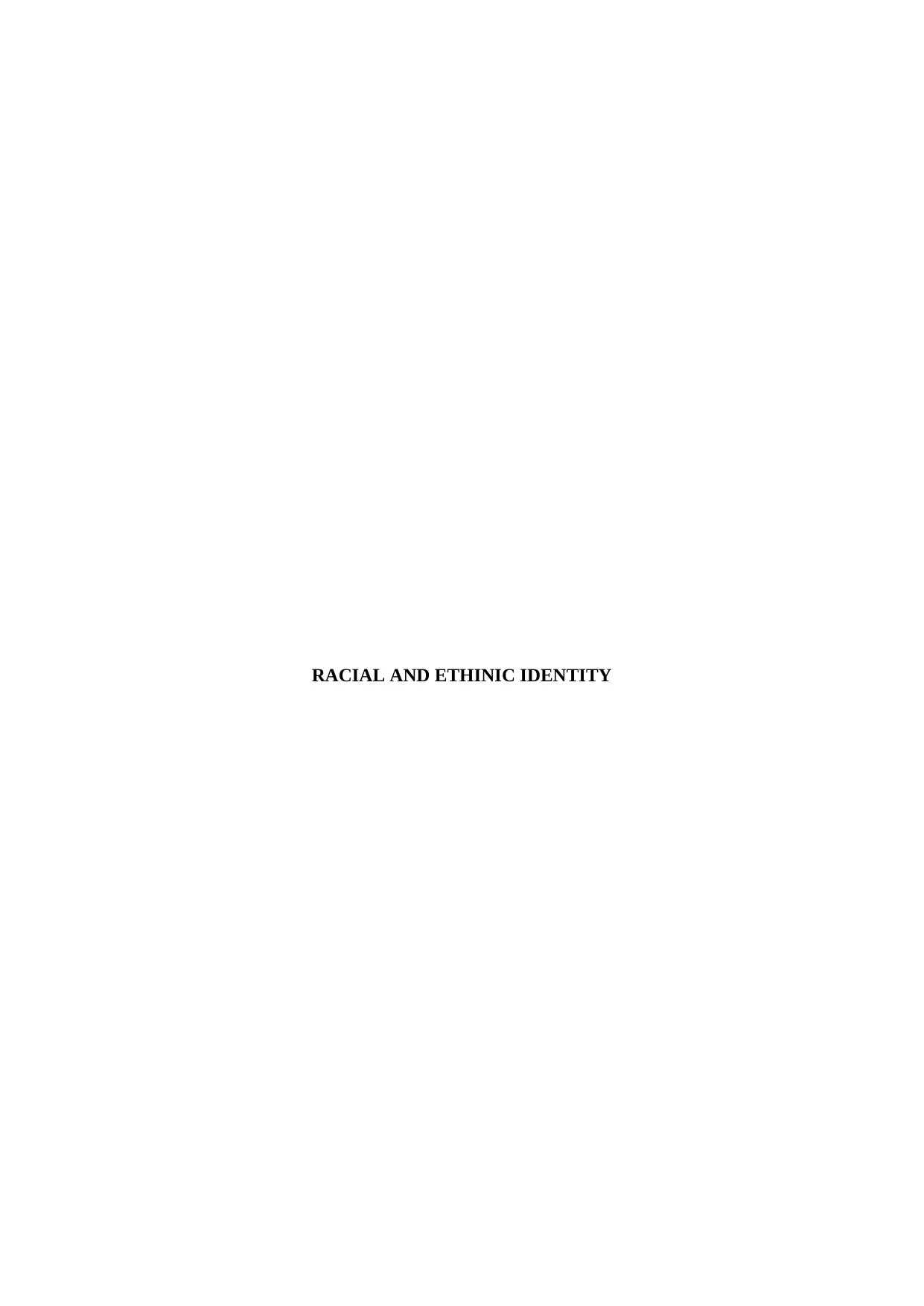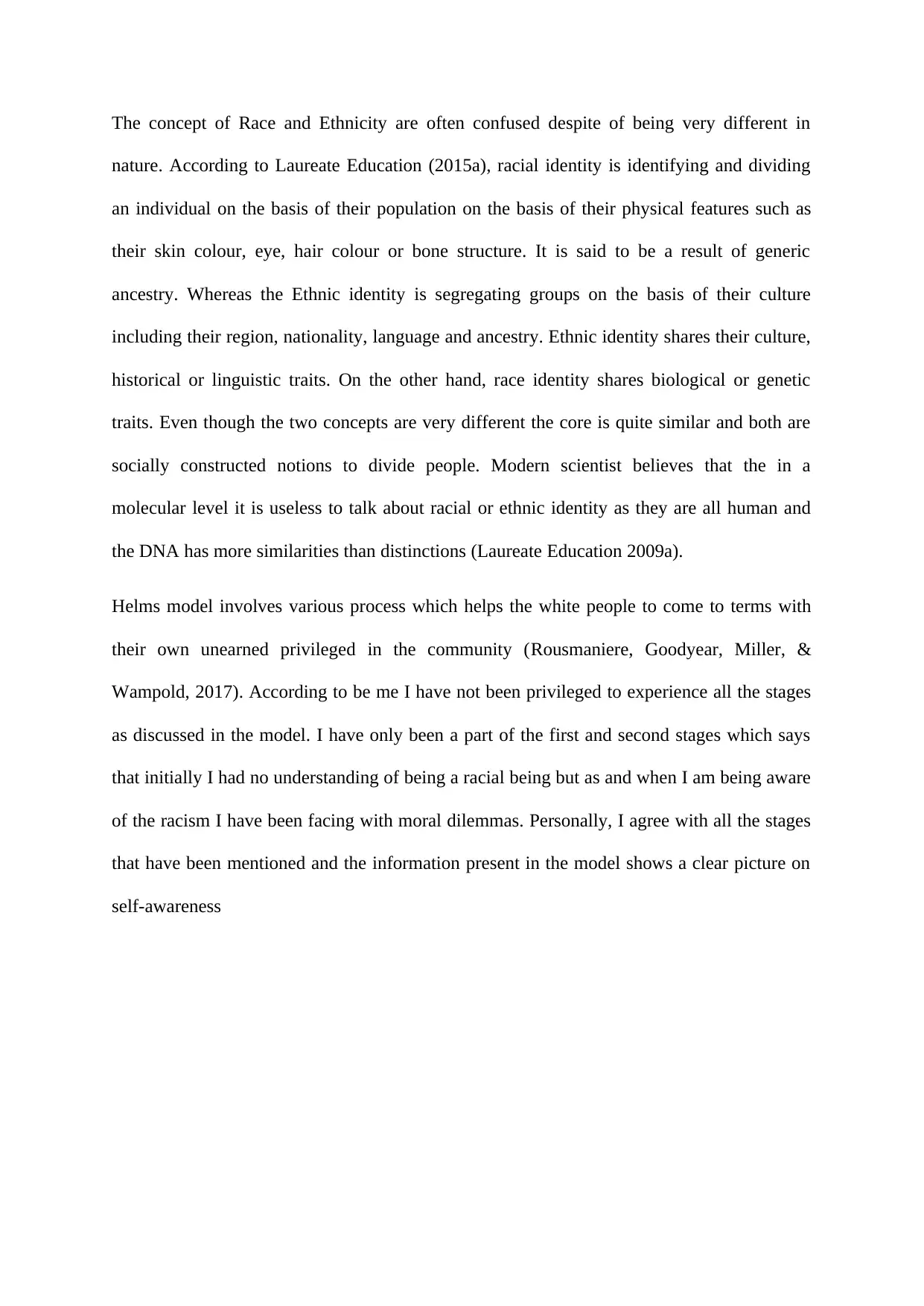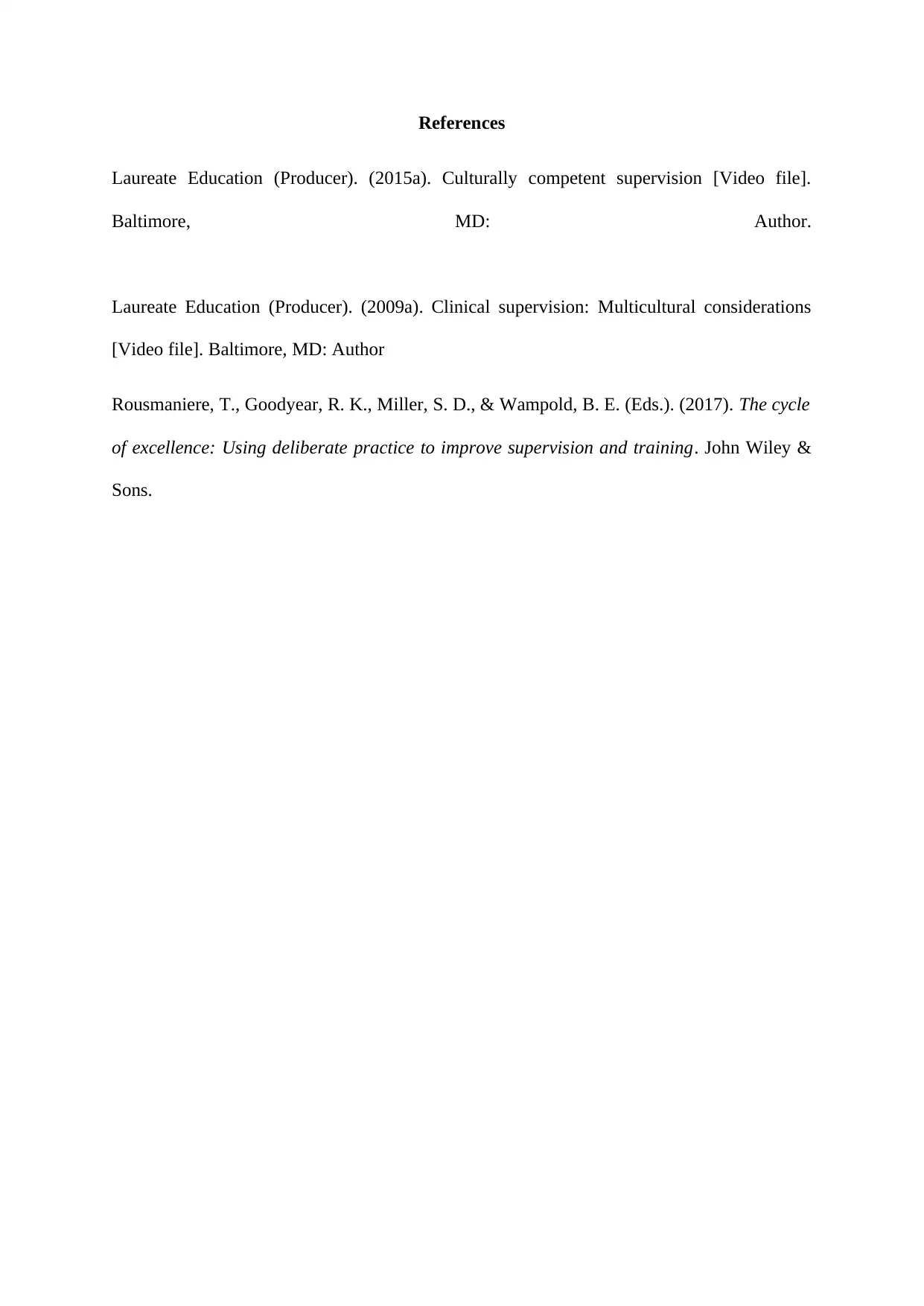Reflecting on Racial and Ethnic Identity and Helms Model Application
VerifiedAdded on 2022/09/05
|3
|404
|19
Journal and Reflective Writing
AI Summary
This assignment is a reflective piece on the concepts of racial and ethnic identity. It begins by differentiating between racial and ethnic identity, highlighting their distinctions and social construction, and then touches upon the scientific perspective suggesting more similarities than differences in human DNA. The assignment then focuses on the Helms model, which addresses how white individuals come to terms with their unearned privileges. The author reflects on their personal experiences concerning the stages of the Helms model, acknowledging their limited exposure to the stages and aligning with the model's framework. References to relevant literature, including videos on culturally competent supervision and multicultural considerations, are also included to support the reflection.
1 out of 3




![[object Object]](/_next/static/media/star-bottom.7253800d.svg)